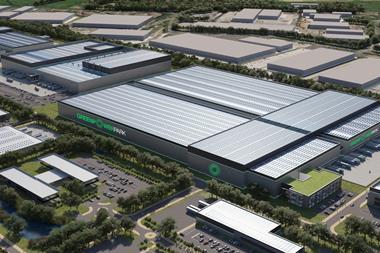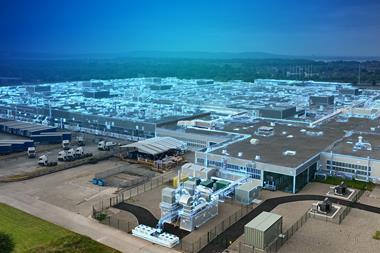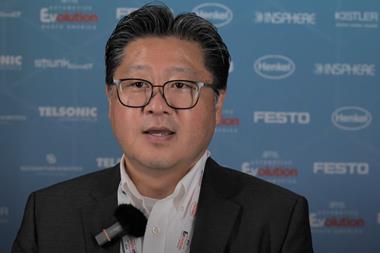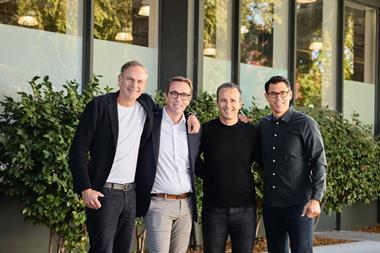At the AMS Evolution North America Conference, Ford and Gestamp leaders outlined strategies to slash production costs, tackle supply chain hurdles, and enhance manufacturing efficiency, laying out the groundwork for affordable EVs that meet consumer demand

The best was indeed saved until last, according to the audience. An important keynote and panel discussion at the AMS Evolution North America Conference 2024, in Dearborn, Michigan, tackled a question pressing for any automotive executive looking to survive in an increasingly competitive and electrified market: how can the automotive industry manufacture affordable mobility at scale? With projections suggesting a need for 30-50% cost reductions, this session examined the strategies necessary to achieve such ambitious savings in the construction of next-generation vehicles.
Led by industry insiders from Ford and Gestamp, the discussion focused on the pressing fact that North American manufacturing must embrace a new level of innovation, flexibility, and operational efficiency if it is to bring electric vehicles (EVs) within the financial reach of the masses - and the ways in which to achieve this.
Christopher Ludwig, Chief Content Officer at Ultima Media & Automotive Manufacturing Solutions, began the session by underscoring the core challenge: the industry must balance affordability with the shift to electric mobility. “Meeting these goals will require a 30-50% cost reduction over the next model cycle,” he explained, highlighting the need for intensive collaboration, advanced technology, and, notably, a committed workforce.
Leaning into legacy: Ford’s approach to affordable EVs

Paul Stephens, Ford’s Manufacturing Transformation Lead, captured attention by calling to mind Henry Ford’s legacy of mass accessibility, reminding the audience of the original Model T. “Over a century ago, Henry Ford’s Model T revolutionised mobility by making it affordable to the masses,” Stephens remarked, noting that the challenge is no less daunting today. “Last year, demand outpaced our production capacity, forcing us to re-evaluate our approach.” While modern consumers demand EVs at competitive prices, the current landscape—marked by supply chain volatility and intensifying competition from overseas EV manufacturers, particularly in China—presents challenges.
Stephens’ solution revolves around three pillars: product, process, and people. In Ford’s strategy, designing straightforward, cost-effective vehicles is fundamental. “We’re witnessing a push across the industry to reduce complexity in vehicle design,” he noted. One example Stephens provided was of a Ford competitor, which reportedly condensed 175 parts into just two, demonstrating the savings possible by reducing manufacturing steps.
In a sector where traditional approaches add to production time and costs, such simplification has wide-ranging implications for price reduction. This focus on simplicity extends to Ford’s process innovations, with autonomous robotics taking centre stage.
“A large part of my work centres on introducing autonomous robots into our manufacturing processes,” Stephens said, describing a recent simulation where autonomous mobile robots (AMRs) handled material delivery through 7,000 hourly missions. Controlled by an AI-powered fleet management system, these robots reduced the required AMR count by 20%, demonstrating how cutting-edge automation can deliver immediate cost benefits. The takeaway is clear: automation not only reduces the need for manual tasks but also paves the way for a leaner, more agile manufacturing system, crucial to Ford’s vision of affordable EVs.
Advanced stamping and lean manufacturing: Gestamp’s Giga approach
Paul Belanger, Director of R&D North America, Gestamp, focused on the role of innovative product development and its critical function in streamlining manufacturing processes. Specialising in body engineering, Belanger introduced Gestamp’s Giga Stamping technology, which promises to reduce production costs without sacrificing structural integrity.
“One of our core strategies is part consolidation using Giga Stamping technology,” he explained, referring to the technique’s ability to create large structural parts from ultra-high-strength steels, allowing a significant reduction in assembly steps and a smaller carbon footprint.
Giga Stamping aims to offer an alternative to the popular yet capital-intensive gigacasting technique by enabling part consolidation without the heavy investment in casting presses. “Gigacasting requires costly infrastructure, which isn’t always feasible across diverse regions,” Belanger noted. Gestamp’s solution leverages existing hot-stamping lines, thereby offering a more flexible and sustainable path toward cost reduction.
“Our workforce is the key to achieving these objectives”
- Paul Stephens, Manufacturing Transformation Lead, Ford
In practical terms, Gestamp’s Giga Stamping is applied to components such as door rings and floor systems. Traditionally, assembling door rings involved laser welding in a two-step process, but the company’s latest innovation integrates a one-piece door ring using overlap patch blanks, thus eliminating the need for welding. Meanwhile, Gestamp has redesigned floor components to incorporate cross-members and rear kick-ups, thereby bolstering passenger safety during side-impact collisions. By simplifying production in this way, Gestamp not only cuts costs but also builds vehicles that are less resource-intensive, a benefit that resonates with today’s sustainability goals.
Maximising impact with strategic consolidation
A pivotal theme of the discussion was strategic consolidation—whether in parts, processes, or design complexity—as the linchpin for cost-effective EV manufacturing. Both Stephens and Belanger illustrated how consolidating multiple functions or components into fewer, more robust parts can lead to substantial savings. In one example, Belanger highlighted the rear frame, which Gestamp traditionally assembled from numerous welded parts. Thanks to Giga Stamping, Gestamp now produces this frame in just two components. This reduction not only enhances the structure’s energy-absorbing properties but also brings a 20-part reduction, demonstrating a dual win for cost and safety.

An attendee questioned the consumer implications of these manufacturing advancements, particularly the high repair costs often associated with gigacasting.
Belanger clarified that Giga Stamping offers a more economical alternative, reducing the need for specialised repair facilities and thus potentially lowering insurance costs. As consumers increasingly consider total cost of ownership, such innovations add value not only for manufacturers but also for end users, making EVs more financially accessible.
The critical human factor in production evolution
Beyond product and process, both speakers acknowledged the essential role of human expertise. Stephens was unequivocal: “Our workforce is the key to achieving these objectives,” he stated. Despite rapid advances in automation, he underscored the enduring value of skilled workers who bring ingenuity and oversight to production. Ford’s automated material flow system, for instance, reduces labour-intensive tasks, yet still relies on workers to manage higher-value processes. This transition, Stephens argued, not only fosters innovation but also enables Ford’s teams to focus on core areas where they can add the most value.
Panel insights on where to find the next cost savings
The session’s audience Q&A provided further insights into cost-cutting opportunities, particularly concerning battery production and the alignment of product engineering with manufacturing. Battery costs remain one of the most significant barriers to affordable EVs, as Stephens noted. “Every part of the process holds potential,” he said, advocating for a thorough reevaluation of each stage, from parts sourcing to assembly.
“Collaborative innovation is essential”
- Paul Belanger, Director of R&D North America, Gestamp
Belanger added that integrating product engineering with manufacturing can unlock additional efficiencies. “Collaborative innovation is essential,” he remarked, explaining that Gestamp’s teams work together from the outset, minimising redundancy and optimising each aspect of the production line. This close cooperation between departments, he suggested, is a hallmark of the lean manufacturing philosophy that North America must adopt to stay competitive.
Driving forward a second revolution in North American manufacturing?
Ludwig’s closing remarks captured the session’s core message: the next revolution in North American manufacturing will be shaped by those who can marry cost-efficiency with flexibility. In this transformative period, OEMs and suppliers are challenged to pursue innovation at every level—from factory layout to the granular details of material flow. Strategies like Ford’s automation and Gestamp’s part consolidation demonstrate a path forward for achieving affordable, scalable EV production without sacrificing quality or environmental responsibility.
As North American manufacturing navigates the road ahead, the imperatives of agility, sustainability, and innovation remain paramount. The AMS Evolution North America Conference underscored this journey once more; a journey defined by relentless adaptability and a shared vision of accessible, sustainable mobility for all.
Topics
- Artificial intelligence
- Automation
- Connected Manufacturing
- Digital Tools
- Editors Pick
- Electrification
- EV manufacturing
- Evolution North America
- Flexible Production
- Ford
- Gestamp
- Gigacasting
- Kaizen
- Lean manufacturing
- North America
- OEMs
- Operational Excellence
- Plant Functions
- Process Improvement
- Regions
- Robotics
- Smart Factory
- Suppliers
- Sustainable production







































No comments yet